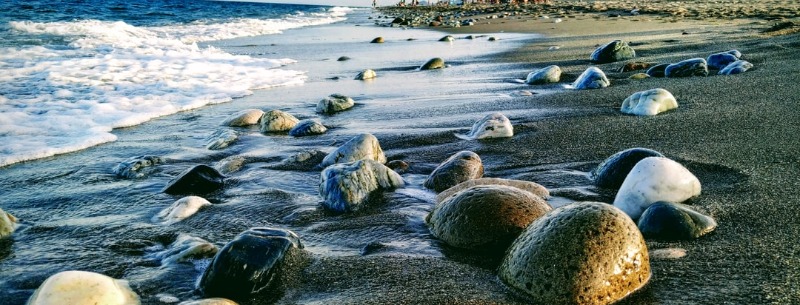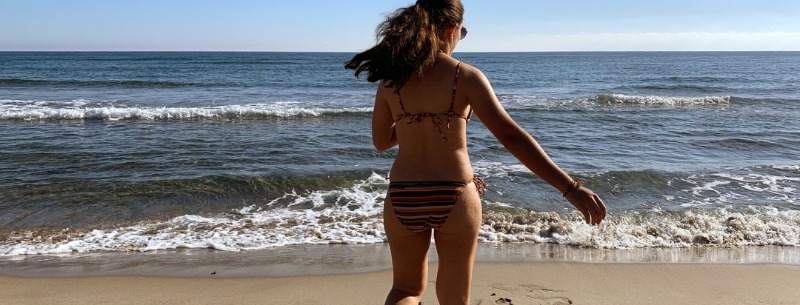Beach Destinations in Almería 2024
The province of Almeria is a strange corner of Spain. Inland it has an almost lunar landscape of desert, sandstone cones and dried-up riverbeds. On the coast it’s still largely unspoiled; lack of water and roads frustrated development in the 1960s and 1970s and it is only now beginning to take off.
A number of good beaches are accessible by bus, and in this hottest province of Spain they’re worth considering during what would be the “off season” elsewhere, since Almeria’s summers start well before Easter and last into November.
In midsummer it’s incredibly hot (frequently touching 100°F/38°C in the shade), while all year round there’s an intense, almost luminous, sunlight.
The Almeria’s city’s own beach , southeast of the center beyond the train lines, is long but dismal.
Almeria’s best beaches lie on its eastern coast; those to the west of the city, particularly Aguadulce and Roquetas de Mar, have already been exploited and although they’re not quite as bad as many on the Costa del Sol, they’re not a lot better either. Either place is an easy day-trip, however, with hourly buses along the coast.
The eastern stretch of the Almerian coastline offers some of the most relaxing beaches left in Spain: half-abandoned fishing communities which have only recently begun to be promoted for tourists. Outside the centers of Mojacar and San Jose development is low-key and with a short walk along the coast you should be able to find plenty of relatively secluded spots to lay your towel.
Carboneras
South of Mojacar beach lie a succession of small, isolated coves, the most accessible of them reached down a rough coastal track that turns off towards the sea just under 4km down the road to Carboneras.
The scenic Mojacar-Carboneras road itself winds perilously through the hills some way inland, and offers only occasional access to some tempting beaches. There’s no bus on this stretch either, and you’d need to be very intent on escaping the crowds to want to drive this way.

Carboneras has an average beach and a few hostales but is scarred by the shadow of a massive cement factory, which dominates its bay.
Beyond, a small road extends to the isolated fishing hamlet of Agua Amarga, an infinitely more attractive spot with a fine beach backed by a tasteful crop of villas.
Both Carboneras and Agua Amarga are served by bus from Almeria.
North from Mojacar there’s easier access, with occasional buses and reasonably easy hitching, to La Garrucha, a lively, if unattractive, town and fishing harbour. This is in the process of development, with villas now thick on the ground and many more in the offing, but it does have a life of its own besides tourism.
There are several expensive hostales and a summer-only youth hostel, but you’re more likely to visit its reasonable beach as a good afternoon’s break from Mojacar.
El Cabo De Gata And San Jose
Heading east along the coast, the closest resort with any appeal is the modest El Cabo De Gata, where there is a lovely expanse of coarse sand. Five buses a day run between here and Almeria, making an intermediate stop at Retamar, a retirement/holiday development.
Arriving at El Cabo, you pass a lak, the Laguna de Rosa, protected by a conservation society and home to flamingos and other waders throughout the summer. Around the resort are plentiful bars, cafes and shops, plus a fish market.
The beach gets windy in the afternoons, and it’s a deceptively long walk eastwards to Las Salinas (The Salt Pans – exactly that) for a bar and cafe.
Beyond lies San Jose, also reached by bus from Almeria. This is an established and popular resort, set back from a sandy beach in a small cove, with shallow water, and fine beaches within walking distance.
Mojacar Playa
Mojacar, Almeria’s main and growing resort, takes its name from the ancient hill village which lies a couple of kilometers back from the sea, a striking agglomeration of white cubist houses wrapped round a harsh outcrop of rock.
In the 1960s, when the main Spanish costas were being developed, this was virtually a ghost town, its inhabitants having long since taken the only logical step and emigrated. The town’s fortunes suddenly revived, however, when the local mayor, using the popularity of other equally barren spots in Spain as an example, offered free land to anyone willing to build within a year. The bid was a modest success, attracting one of the decade’s multifarious “artist colonies”, and now, twenty years later, they are quickly being joined by package-holiday firms and second-home professionals.
Nightlife happens all along the beach strip throughout the summer and it’s fun just to cruise and see what’s on offer. The sassiest of the discos is Pascha, easily tracked down at the foot of the strobe light it beams into the sky every night, and the beachfront Goa is similar.
The beach itself is excellent and the waters (like all in Almeria) are warm and brilliantly clear.
